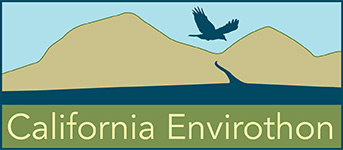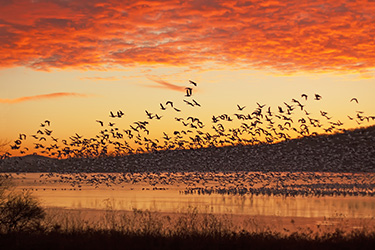Wildlife
Recommended Web-based Wildlife Study Materials for Envirothon 2024
A series of birds and their calls/songs and an Audubon link of birds sounds.
https://www.audubon.org/news/how-start-identifying-birds-their-songs-and-calls
Wildlife Study Materials – Bird Audio Files
Bald Eagle
Red-Tailed Hawk
California Quail
Killdeer
Mourning Dove
Burrowing Owl
Spotted Owl
Anna's Hummingbird
Acorn Woodpecker
Olive-Sided Flycatcher
Black Phoebe
Common Raven
Oak Titmouse
House Wren
California Gnatcatcher
Western Bluebird
American Robin
Study Links
Animal Tracks Study Links:
http://www.naturetracking.com/
http://www.bear-tracker.com/guide.html
Animal Scat Study Links:
What scat can tell you about your wildlife neighbors – CSERC
Scat ID | Internet Center for Wildlife Damage Management (icwdm.org)
track_and_scat_glovebox_guide.pdf (arizona.edu)
Animal Skull Study Links:
Mammalia — identification guide — Discover Life
skullsite – Bird Skull Collection
Animal Skull Identification Guide – Waking Up Wild | Waking Up Wild
Kansas – What’s This Skull? (whatsthisskull.com)
Recommended Web-based Wildlife Study Materials for Envirothon 2023
Bighorn Sheep Resources
Envirothon Wildlife Team 2022-23
Preparation for Webinar on 3/4/23 with Paige Prentice
1. Desert Bighorn Sheep – Joshua Tree National Park (U.S. National Park Service) (nps.gov)
– Description, habitat, food, activity, life history, conservation
2. Desert Bighorn Sheep – Species Distribution Model, DRECP | Data Basin
– Desert bighorn sheep potential habitat map
3. Monitoring Efforts (ca.gov)
– Monitoring efforts, capture methods, population surveys, and waterhole sits and cameras for bighorn sheep by CDFW
4. Desert Bighorn Sheep: Connecting a Desert Landscape (U.S. National Park Service) (nps.gov)
– Article with background on sheep biology, research information, and pictures
5. Featured Scientist | Paige Prentice (ca.gov)
– Background on Paige Prentice (presenter)
Recommended Web-based Wildlife Study Materials for Envirothon 2022
California Ecosystems & Wildlife Videos
- Ecosystems of California YouTube Video from Prof. Erika Zavaleta
- Entire playlist of videos: https://youtube.com/playlist?list=PLv8jVaycwd-2s1vQVwfqiyjNVrKjRfiw0
- Recommended Segments:
- Biodiversity (16:17): https://youtu.be/-Jq9945N7lY
- Deserts (14:31): https://youtu.be/aMZBN6KyJBE
- Rivers (11:02): https://youtu.be/LWOPUTBJKnc
- Estuaries (12:12): https://youtu.be/i5qhlXvmbWE
- Beaches (8:49): https://youtu.be/rfP91UZWfs4
- Offshore (14:26): https://youtu.be/yK6cb14zZy4
- Agriculture (12:15): https://youtu.be/B0UuouiHTbI
- Forestry (22:16): https://youtu.be/BJ4GM6Bd6FM
- Optional Segments:
- Grasslands (11:57): https://youtu.be/gvTvQ-vVVVY
- Oak Woodlands (14:26): https://youtu.be/2FD9VuqI5Wg
- Animal Tracking (9:02): https://youtu.be/34ngW2klEwI
Please visit California Envirothon’s YouTube Channel
Plastic Waste in Aquatic Food Chains
- Marine Systems
- Impacts to Birds
- Ocean Currents Podcast May 1, 2017 Episode: “Do plastics in the ocean smell like food to ocean seabirds?” Sanctuary Radio Program 2017 | Cordell Bank National Marine Sanctuary (noaa.gov)
- Interview with Dr. Matt Savoca, Marine Ecologist/UC Davis graduate.”If it smells like food, and looks like food, it must be food right?” New research highlights how plastics may take on the smells of typical food that seabirds like to eat. Learn more about this recent research with marine ecologist and UC Davis graduate Dr. Matt Savoca.
- Article: Scientists Now Know Why Some Seabirds Eat So Much Plastic – The Atlantic
- Journal Article: Savoca, M.S., Wohlfeil, M.E., Ebeler, S.E. and G.A. Nevitt. 2016. Marine plastic debris emits a keystone infochemical for olfactory foraging seabirds. Science Advances 2(11): e1600395.
- Ocean Currents Podcast May 1, 2017 Episode: “Do plastics in the ocean smell like food to ocean seabirds?” Sanctuary Radio Program 2017 | Cordell Bank National Marine Sanctuary (noaa.gov)
- Impacts to Fish
- Journal Article “Plastic ingestion by marine fish is widespread and increasing” Plastic ingestion by marine fish is widespread and increasing – Savoca – 2021 – Global Change Biology – Wiley Online Library
- Savoca, M.S., McInturf, A.G. and E.L. Hazen. 2021. Plastic ingestion by marine fish is widespread and increasing. Global Change Biology 27(10): 2188-2199.
- Journal Article “Plastic ingestion by marine fish is widespread and increasing” Plastic ingestion by marine fish is widespread and increasing – Savoca – 2021 – Global Change Biology – Wiley Online Library
- Impacts to Sea Turtles
- Trash in the Ocean
- Golf Balls in the Ocean Video: Why this student collected more than 50,000 golf balls out of the ocean (vice.com)
- Impacts to Birds
Trash in Terrestrial Ecosystems
- Desert Ecosystems – Trash Subsidies Increase Predator Populations and Sensitive Species Impacts
- Fact Sheet:Ravenous Ravens | The Living Desert
- Fact Sheet: Tortoises in Trouble | The Living Desert
- Fact Sheet:You Can Help | The Living Desert
- Article:Ravens (U.S. National Park Service) (nps.gov)
- Video:Tortoise in Peril:https://youtu.be/EoRGb5dQRRQ
- Video:The Heat is On – Desert Tortoises and Survival:https://youtu.be/kimgkupAmTo
Impacts of Lead on Wildlife
- Lead Bullet Risks for Wildlife & Humans: https://www.nps.gov/pinn/learn/nature/leadinfo.htm
- Journal Article: “The persistent problem of lead poisoning in birds from ammunition and fishing tackle” https://static1.squarespace.com/static/618acc585ede3d01b735c375/t/61a15530dfd0aa6784f11eca/1637963058155/The_Persistent_Problem_of_Lead_Poisoning.pdf
- News Article: “Nearly half of bald and golden eagles in the US have chronic lead poisoning, most likely from bullet fragments” https://www.businessinsider.com/eagles-lead-poisoning-bullets-hunting-2022-2
- California Condors:
- Lead Bullets & California Condors: https://www.ventanaws.org/condorthreats.html
- Ventana Wildlife Society Non-Lead Ammunition Program: https://www.ventanaws.org/ammunition.html
- Journal Article: “PATTERNS OF MORTALITY IN FREE-RANGING CALIFORNIA CONDORS (GYMNOGYPS CALIFORNIANUS)” https://static1.squarespace.com/static/618acc585ede3d01b735c375/t/61a1549edd99c63827129e4d/1637962910882/2012_rideout_patterns_of_mortality_in_cacondors.pdf
- Journal Article: “Feather Lead Concentrations and 207Pb/206Pb Ratios Reveal Lead Exposure History of California Condors (Gymnogyps californianus)” https://static1.squarespace.com/static/618acc585ede3d01b735c375/t/61aed0052e98da3b2bab3b34/1638846470008/Condor+Lead+Levels+in+Feather.pdf
Climate Change


